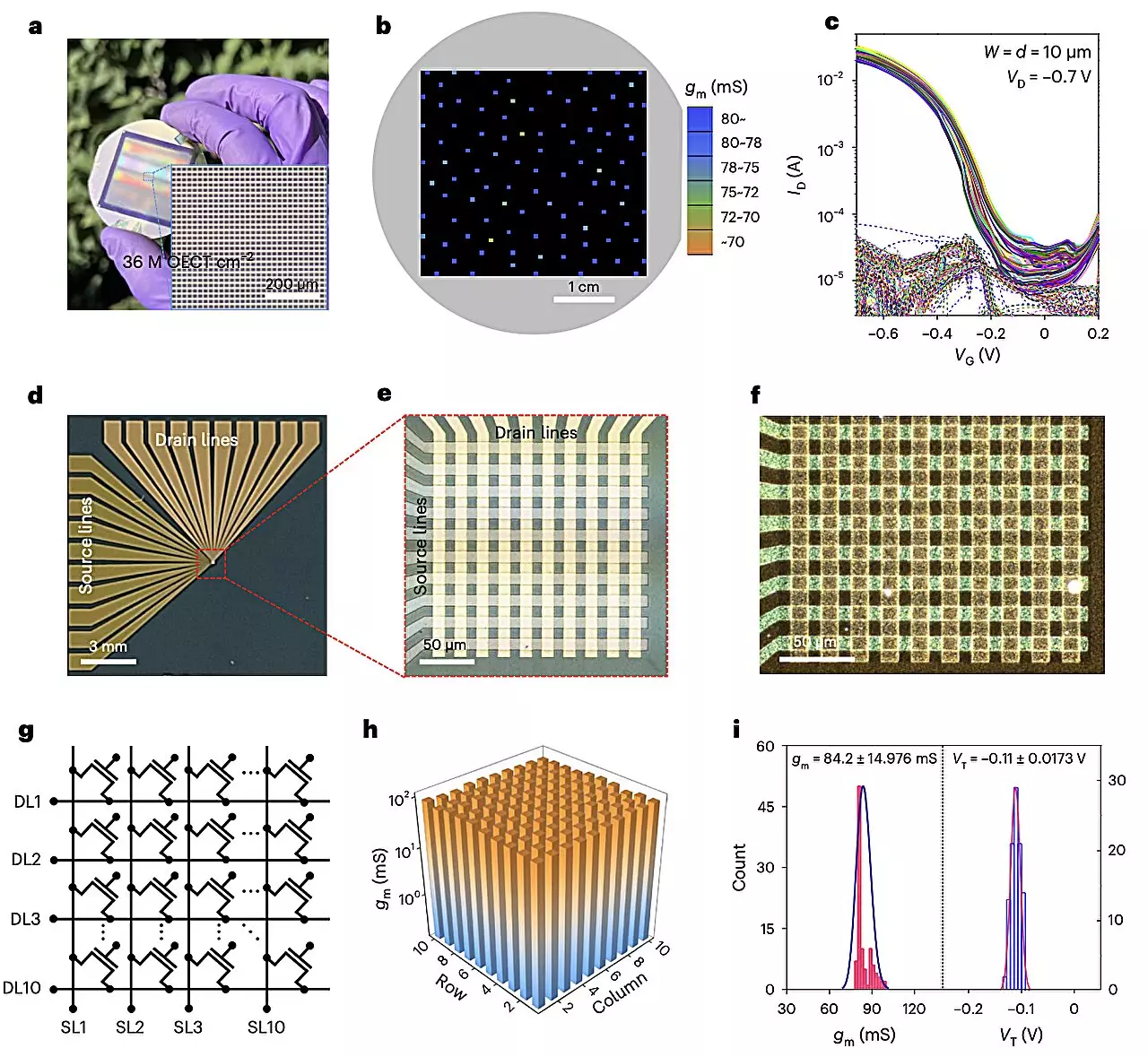Organic electrochemical transistors (OECTs) have gained attention in the world of electronics due to their ability to modulate electrical current with minimal changes in voltage applied to their gate electrode. These transistors, based on organic superconducting materials, show promise in the development of brain-inspired and wearable technologies. Notable advantages of OECTs include their amplification and sensing capabilities, low driving voltages, and versatile structure.
Despite the advantages of OECTs, conventional devices have faced limitations such as limited stability and slow redox processes that can hinder overall performance. Researchers at Northwestern University recently proposed a new fabrication strategy to address these challenges and enhance the density and flexibility of OECTs.
The research team, led by Jaehyun Kim and Robert M. Pankow, utilized electron beam lithography (eBL) to micropattern organic semiconductor films for the creation of high-density and mechanically flexible vertical OECT arrays and circuits. This technique allowed for the precise patterning of semiconducting films without the use of masks or chemical solvents that could potentially damage the materials.
The use of eBL resulted in ultra-small, high-density patterned films with clearly defined conducting channel regions. These vertically stacked OECT arrays exhibited transconductances ranging from 0.08 to 1.7 S, transient times under 100 µs, and stable switching properties exceeding 100,000 cycles. Additionally, the researchers successfully developed vertically stacked logic circuits, including NOT, NAND, and NOR gates, that demonstrated exceptional performance and operational stability.
The breakthrough fabrication strategy outlined in the study presents opportunities for improving the stability and performance of OECT circuits. By enabling the scalable fabrication of OECTs, the new e-beam exposure technique introduced by Kim, Pankow, and their colleagues could pave the way for the integration of OECTs into various electronic devices. This advancement has the potential to revolutionize the field of organic electronics and drive innovation in areas such as biosensors, wearable devices, and neuromorphic systems.
The recent developments in OECT fabrication present exciting possibilities for the future of electronic devices. By overcoming the limitations of traditional OECTs and introducing innovative fabrication techniques, researchers are opening doors to new applications and enhanced performance in the realm of organic electronics. The collaboration between academia and industry will be crucial in further advancing these technologies and bringing them to market.


Leave a Reply